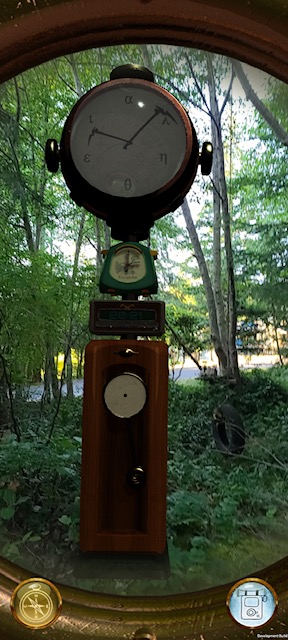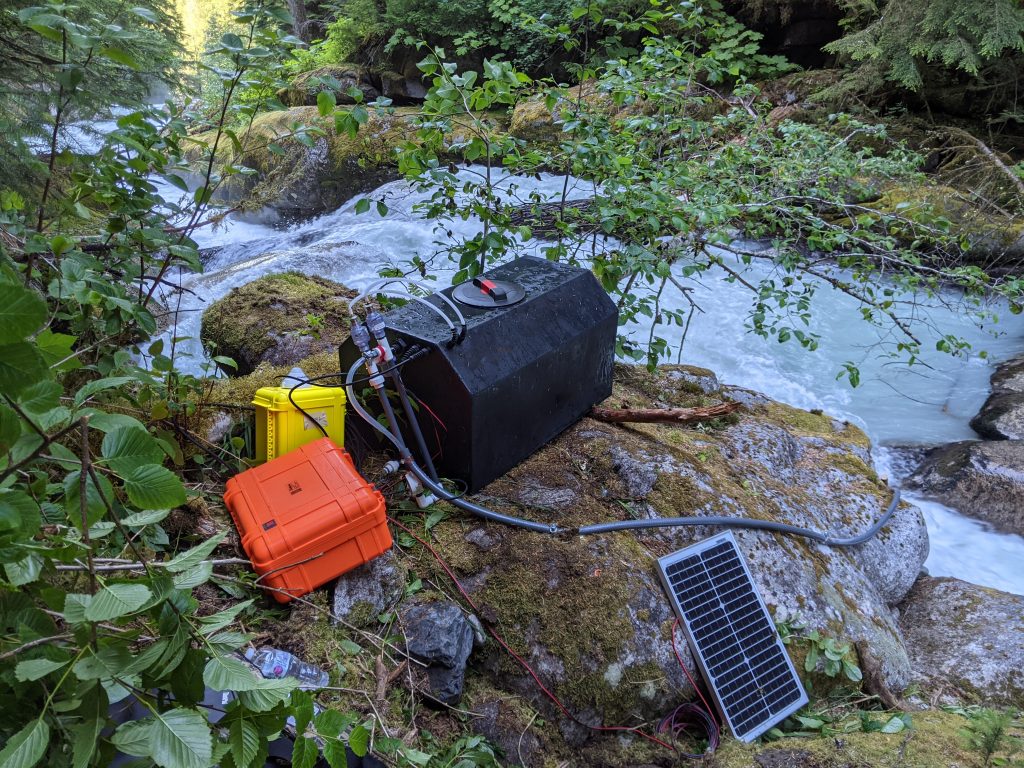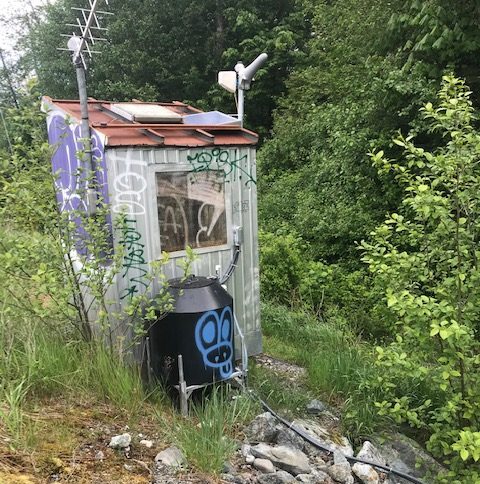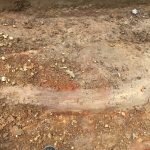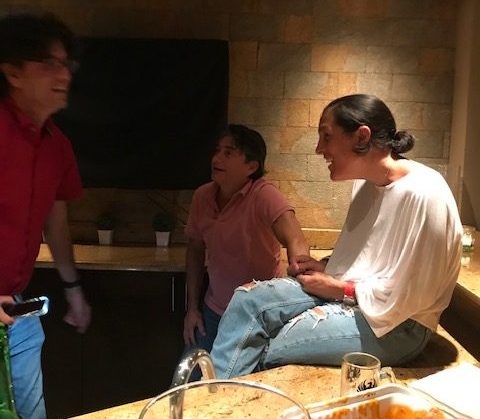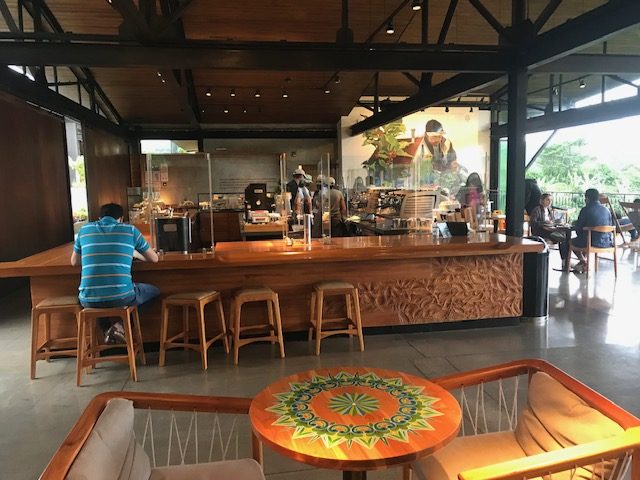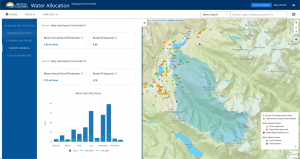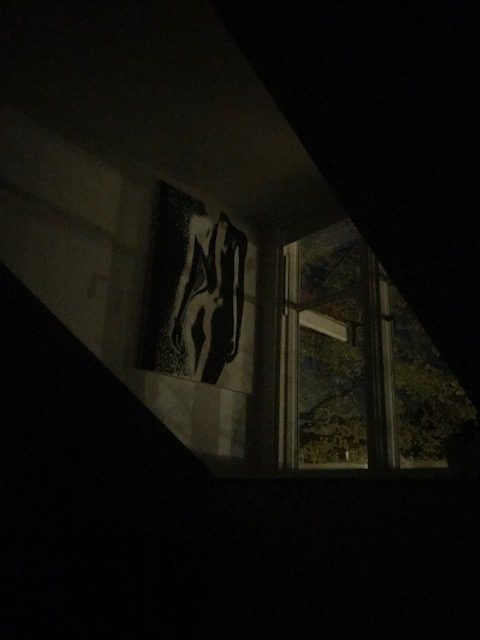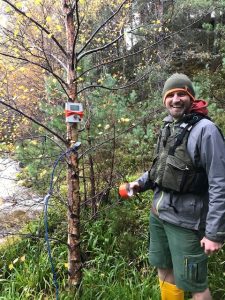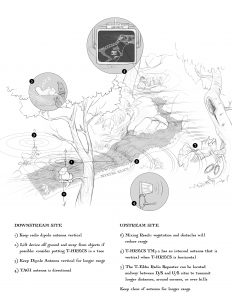Friends! Gather round. We have just returned from a long journey to the Northern seas on the good ship Fathom. We have seen Helios rouse his brilliant steeds from their slumber and gallop out across the heavenly fields. We have seen jet-black-box battle ships off the rim of Horizonland while 100 fathom tall, 6-armed kilted Skotsman play bagpipes into battle with bionic sharks. We’ve been subjected to the near-perfect torture techniques of the Lennermarkian, Wennerbergic, and Cressopite clans of Norrköping, each time telling them everything I knew at the mere hint of torture, until (convinced we really didn’t know much) they let me go. Using only salt for currency, we traded stories and songs for our crude salt dispensaries in the Tarantik Mountains of Muenchenland, realm of the wizard Chiogna. We’ve traveled to the fabled Spurway Archipelagos, just off the northern coast of Grustland, where magic mushrooms grow in the roots of trees, art decays in the forest, and ghosts haunt every close and pub.
But stay! We’ve returned with gifts for you! No no, not a new coat, or umbrella, or bonbons. No Ma’am, the most precious of gifts: Time. For over this land, an army of crows caw out a warning, time is closing in, time is breathing down our collective neck. From Glasgow to Chilliwack Lake, Nei-Chure is reclaiming what is hers. The murder of crows swarming in the ebony sky sing in concert: Kronos is Koming.
But we have time. What we chose to do with it, is the utmost import. These things we’ve seen over the edge of the known world, there! To the North, where Dion Rises to chase Minerva! Would these bodies meet, what then? If a body meet a body, coming thro the rye!
Accompanied by our brave and illustrious illustrator Fenella, we have here attempted to document our findings here in this chronicle so that we can all decide best what to do with the gift of time.

Post(ish)-Pandemic Fall Tracer Hydrography Workshop & Film Festival
How did these two topics not find each other before? Thank Kronos they have. Kronos? Who is Kronos? Read on!
You are cordially invited to attend and present at the workshop to be held virtually on Dec 2, 2021 from 14:30 to 18:30 CET or the more startling 5:30 to 9:30 PST (and sure, I’m feeling generous, 8:30-12:30 EST). The intent of the workshop is three-fold:
- Discuss and present on the Ecological Impact, or lack thereof, of tracer (esp. NaCl) methods on the environment. This has been a long-standing questionmark around Salt dilution. While it’s possible to make measurements far below any Water Quality Guideline (WQG) thresholds, this is generally at the points far downstream (not in the Initial Dilution Zone (IDZ). It’s also possible to “overdose”. We all want to protect the critters that rely on river for their home, hunting, and (growl) mating ground. Heaven forfend that we’d actually damage the habitat we are trying to protect.
- Tracer methods measure flow, but the other side, and equally important, of the equation is the discharge-proxy, usually depth… but not always. We want to invite novel depth, velocity, sound, or other index rating methods to present their exciting findings.
- Build the Community: we are a creative, warm, and humourous bunch (despite our no-holds-barred Flow Regatta Slam Down Grudge Matches), but like our forbearers, we all like to toast the warriors and dance the night away after the contests. Given the current situation, you know, the pandemic, we can’t join hands and arms and sway singing King Nick’s praises. Instead, we invite you to share your face and story and landscape via a little film-fest. These can be novel methods, pre-canned training videos, home-videos, Cinema Noir B&W commentary on the roll of “Nature” in “Modern” “Society”, or what have “you”.
If any of this sounds appealing, please let me know by signing up to the doodle poll here. Please tell me your intent to give a presentation and its topic.
AutoSalt Installations
My oh my, it’s been a busy year. We have added 6 new sites to the AutoSalt Gallery over the last 6 months: Eskay, Nooklikonnik, BCHydro Boulder, Stawamus, Hebylund-Kvarnsjön. Each site had its fair share of challenges, successes, and catastrophic/soul-destroying/Epoch defining failures. .. Well, maybe that’s hyperbole, minor glitches, more like. Thankfully, like NASA, we’ve built in plenty of redundancy and non-critical failure mechanisms.

Eskay Creek
This remote mining site in Northern BC had several interesting features. Argillite Creek feeds into Tom MacKay Creek, which feeds into Ketchum Creek. This means, we could get 3 independent measurements from a single injection. Dosing was tricky, and we aimed from 200g/cms at the middle site, Tom MacKay. This put us in the 1kg/cms range at Argillite, and 50g/cms at Ketchum. To boot, we have employed a Water Quality Mixing Model (WQMM) at H9 using significantly different EC.T from the control structure on D7. This allows us to directly measure the dilution ratio for Initial Dilution Zone Studies. Contact us for more information.
Nooklikonnik Creek
Tucked into the vaulting fjords of the Bella Coola valley, lies the pastoral community of Bella Coola, home of the Nuxalk First Nation, and nearby Hagensborg, settled primarily by Norwegians. Flying into the community sets the scene for a dramatic visit. As you bank into the valley, between clouds and over rocky bluffs, you see the green valley and runway far, far below. Having survived an aggressive and harrowing decent onto the small one-path landing strip, the passengers on the little twin prop plane felt a wee bit closer, and began bonding and trading secrets of the valley.
Meeting our host, Vincent, in the parking lot of the airport, we were whisked off to the Bella Coola Mountain Lodge. Vincent entertained us with backstory to the current political landscape in the valley. Like many things here, compromise is the stable state between extremes.
It was pleasing to see a poster for a small outdoor concert, the first I’d seen since the start of the pandemic, in the lobby of the lodge. Bella Coola is an intriguing mix of Norwegian, Indigenous, Hippy, and Industry people.
That evening, we hiked up the valley with Vincent, Shayne, John, and Terry to get the lay of the land and scope out the injection and EC.T probe locations. On the hike up, I chatted with Vincent. I was explaining how we didn’t have any patent protection on the QiQuac or T-HRECS because we’d rather put that time and money into further development, rather than legal fees. He thought about it briefly and remarked “It’s the same way with our land!” Classic Vince.
We returned the next day and Shayne and I made quick work of the installation while Vince and Terry, like the stoic heros of Greek myths, hiked up the mountain carrying bags of salt and tanks full of nuthin’. At times, crawling on their knees under blowdown, while the trail-makers slowly cleared the path behind them. After returning to the lodge, we all enjoyed several local brews and burgers fresh off the BBQ. A heated debate arose over various community heating and energy decisions, every decision affecting the people of the valley for years to come. Again, I felt like I was in the presence of seasoned statesman balancing the needs of the people against the unknowns of the future. Only Kronos knows for certain what time will bring…
The next day, Shayne and I had a leisurely and spry hike back up the hill along a garden-like path. We spent the morning rebooting the dreaded UniData NRT. This is a quick rant about Unidata NRT: These are great units. Like the NASA rovers on Mars, they’ve far exceeded their mission objectives and many are coming on 8+ years old. But when they lose their sh–, they require a skilled and expensive technician to go to site, remove an internal battery, wait 5mins, then navigate through a Rogue[1] like maze of menus systems and stare at a repeating pattern of symbols until the holy grail of RSSI values: 4, appears on the screen. A mad dash to System-> Initialize hopefully allows you to go home. This was thankfully our case, and the Neon reliably reported Creek Depth, Reservoir Depth, Battery Voltage, and Mass of NaCl injected for the next several months…until Aug 8. Some Globalstar glitch sent a wave of crashes and remorse across the country. Unidata still does not know how or why this happened. I personally believe that Unidata is missing an opportunity to get their previously loyal customers back on board by offering either A) the fancy new NRT3000 series at cost in exchange for the Workhorse NRT2000 series OR at least B) offer an auto-re-initialize box to affected customers. This little box allows anyone to simply plug in and reinitialize the system without staring at repeating patterns for up to 40mins without the fun of Rogue. There, that’s my rant Unidata, take it or leave it.
Shayne and I spent the morning up there and were getting famished by the walk down before my flight left in the afternoon, so we indulged in that classic pastime of field technicians the world over: discussing food on the walk to the truck. Shayne traveled extensively in Asia and praised the tasty and cheap flavours of Southeastern Asia. Thailand, Vietnam, Malaysia, my mouth was watering thinking on it. We recalled vividly eating frog soup in Africa, and other critters we really wouldn’t think of eating if it weren’t the culture. But then we do some crazy things in western culture too. I’m reminded of a scene from The Office-Post Michael Scott. The crew is visiting Dwight’s Beet Farm and after enjoying a delicious slice of apple pie on the country table while Cousin Mose stared from the corner, Pam remarks “That was delicious pie, Dwight, it would be great with a glass of milk.” To which Dwight deadpans, “What animal?” and while Pam quickly corrects him , he simultaneously says “Don’t say cow!” Yah, so there’s that.
The AutoSalt system worked Faaaaaaan-tastically. All the site conditions were favourable (except solar exposure, of course) a nice stable hydraulic control, some nice storms, a vigorous mixing reach. We couldn’t get to the right bank, so we installed just downstream on the left bank, and much further downstream also on the left bank. See figure 5 and the Google Earth placemarks. The Derived Rating curve for this site, so far, is shown in Figure 6. This is before the nice little storm that showed up on Sept 21, shown in Figure 7. We’ve yet to collect this data, but hopefully everything worked (why wouldn’t it ? laughing maniacally/pathetically) and we have a completed RC within a few short months. Thanks Shayn, John, Vincent, and Terry for your help and patronage!

WSC Stawamus
Our Epic journey with Water Survey of Canada continues at the Stawamus River site. This site has the benefit of a nice little warm hut to put the equipment in, but lacks a sufficiently-vigorous mixing reach before it splits about 200m downstream. Not to mention a changing hydraulic control AND an unreliable and moving pressure transducer record. Only 3 degrees of freedomm, ha hahahhahaa!! No Problem!
There is agreement between the left and right bank for flows below 20 m3/s, but as Figure 9 shows we are starting to see discrepancy above 2.2m. There was no better site anywhere nearby for the injection system. You can see more clearly the discrepancy in Figure 11, AT68 is on the right bank, the same side as the injection, so sees more salt, and therefore results in a lower Q (Q=Mass/Area under EC.T-Time curve). AT69 is on the left bank.
As you can see in Figure 10, the AutoSalt tank has adopted a persona, channeled by a local graffiti artist. Somehow, this little fellow has protected the tank and its exposed plumbing from any evil and it has happily hummed away since December 2020. This was a Lyssa and I special, Lyssa bringing the full Power of WSC, which she explained is nearly god-like. I watched in awe as she traded legislative policy-speak with a local resource management officer, he standing high on the bridge while Lyssa parried and returned fire from below. In the end, WSC did want they wanted. They always do. As Lyssa elegantly explained later “Ehh, Water Survey.” Indeed, how true.

In the end, we have 176 measurements, but only 75 “Groups” or independent injections at different stages. The entire derived hydrograph, derived within the WIT-HM and plotted in Kronos Time Series, is shown in Figure 12
Me and Julio down by the Waterfallpool yard
You may recall Julio from our stumbling adventures around Madrid in 2017. Julio Masis is a gentleman and a scholar, a River Hydraulic specialist fluent in Spanish, English, and Japanese. He lives and works in San Jose, Costa Rica. He made good on his discotech-inspired threat/offer to find some work for me to do in Costa Rica, and I headed down on Aug 6 to join my friend in the Hunt for Interconnected Water.
This was an interesting puzzle. Julio’s client owned a beautiful piece of property at the base of a waterfall north of San Jose. Beside the waterfall, water shoots out of several crevices in the broken rock face. As a public water supply, the local law states that no building can be within 30m of a water supply, which subjected his client’s home to possible demolition or relocation. But there was one question, and two confounding factors: Q: Is the river water and artesian water connected locally? 2. The artesian spring is 5-8 m above the level of the house, so how could any theoretical site contamination ever reach the water supply. To explore both questions Julio and I devised a tracer study to determine local hydraulic connectivity.
We began by injecting salt upstream of the waterfall. This turned out to be quite a large event as the river downstream of the home had topped its banks. While we saw the salt pass the probes in the river downstream of the pool, no such signal appeared in the artesian spring signal. Furthermore, both the ECT and temperature of the mainstem were significantly different than the artesian spring.
To explore the connectivity a bit further, we drove along country roads, weaving between farmers fences and over hill with the occasional stop at a local grocery store to pickup some fried plantain and ice-cream sandwiches. We drove Julio’s old school Mitsubishi Montero Diesel. Julio claimed this vehicle could go anywhere, was up to any terrain or path. As he exclaimed this, I stared at the nearly bald tires and slippery red-clay soil around us…
We finally came to the side road that Julio claimed would lead us down to the river where we could throw in salt, a few km upstream of the property. We got out and stared at the hill, it’s recently wet surface appearing dry due to the magically absorptive property of clay, shown in Figure 13. I said, “I’m not sure Julio. I think we could get down, but not back up.” So I started walking down to the river. After going about 30m, I heard Julio start the Montero and watched, with equal parts horror and respect as he inched over the crest of the hill and instantly was swallowed into the deep tracks left by tractors, for which this road was intended. Well, he made it down, as speculated to location A) in Figure 14. But when he put it in reverse to undo his hubris-inspired drive, his wheels spun with such a pleasant slippery sound, it was almost soothing, had I not been doing the calculations on how far back the country road I’d seen a house, at location ii).
After staring at the truck for a few minutes, we walked down to the river (which turned out to be the wrong river) and dumped in the salt. Then our evening entertainment began.
The first thing I noticed was these perfectly milled pieces of wood along the side of the road. Flat on one side, bark on the other. “How convenient,” I thought. We placed them behind the wheels, but even the 1.5” rise was too much for the weight of the truck and almost zero co-efficient of friction. So we devised a scheme whereby we placed a higher piece of wood in front of the tires, drove forward onto the rise of wood, then gave ‘er backing up. This scheme, after several iterations and hours, got us back onto the flat spot, B) in Figure 14. But we were still facing the wrong direction. After several attempts, and I’m certain matter of cm of tolerance and life-or death pushing from me, we got turned around and onto the runway at location C) in Figure 14. We stared at the icy red hill.
“If I stay on the left, I can avoid falling back into the tractor ruts,” said Julio.
“Ok,” I replied.
This was a personal journey for Julio now. I stood back. He started the diesel engine. I heard him thinking. Then he revved the engine, several times, and gave ‘er.
There are times in one’s life, you know these times, where your life can go one way or another. Often, it’s the path between the easy path, or the hard path. Robert Frost wrote “Two paths diverged in the wood, I took the path less traveled” I believe it’s important to take the hard way, do the hard thing, take the side road, run out of gas, make bad decisions. Overall, the world is a tremendously friendly and safe place, full of friendly strangers. Often I’ve noticed, it’s when you’re on these harder paths that you find the friendliest strangers.
It was dark by now, both Julio and I were covered in mud and hungry, trying to decide whether to call in assistance using the little bit of cell phone battery we had left. Admitting defeat. So I couldn’t really tell when Julio made it to the top of the hill. I only saw his brake lights come on somewhere near the top. I pictured the turmoil of backing down again, but a friendly “honk, honk!” signaled to me that all was well in our world. In fact, we were the champions of the struggle that we both conquered and authored. We were free. This occurred at location iii).
As we bounced down the country road, we talked about how the best stories are when things don’t go well. The struggle is the story. We were met with questioning looks from the excellent Pizza restaurant we wandered into in Zarcero. But the beer rarely tastes as good and the pizza was delicious. We drove back to our adopted paradise with full hearts and tummies.
The next day, after realizing we’d dumped salt into the wrong creek, we set out further afield and dumped into the correct creek. Still the salt wave didn’t materialize in the artesian spring. Our final report stated there was no evidence of local, or watershed connectivity. This also raised the challenge to the policy of no buildings within 30m. Let me know if you need Me and Julio to come to your country and make poor but rewarding decision while driving country roads.
[rev_slider alias=”costarica”]
I headed to the coast, Santa Theresa, to once again try and fail to surf. After developing two permanent scars on my chest where my rib-cage met the board, and lacking the intellectual capacity to put on a shirt, I was treated to meeting Jen and her lovely kids. Originally from Prince George (What! I’m from Quesnel!) she came to Costa Rica and fell in love, and now she calls this little paradise her home, running the Casa Zen with her husband Julio. Casa Zen is populated with surf tourists, Argentine, American, Brits, Israeli, etc. Us cool kids hang out in the common area and play guitar, chat surf, charge our laptops, and just enjoy being young. I also met
On the last day in Costa Rica, I planned to lay low and finish up a report, but saw an ad for a Starbucks Coffee Farm, not far away in the hills: Hacienda Alsacia. So I drove my rental car up the windy lush road that led to a shangri-la of the American Coffee Behemoth. Nestled in the mist covered hills, I honestly wanted to stay there all night, but alas, they asked me to please leave the premise, and to please put my pants back on, so I headed back down the hill. As I came to a stop for pedestrians crossing the street, I was flung 2 feet in the air by the impact of a car, moving at full speed, from behind. This is NOT, what I had in mind when I heard you would get rear ended in San Jose. After the shock wore off, I pulled over, only to see the other driver speed off with smashed front end, yelling something in Spanish, probably something like “I’m sorry I hit your car, but I don’t have insurance! Welcome to Costa Rica and enjoy your stay!”
I didn’t have the presence of mind to take a photo of the speeding car. Regardless, Friendly Byron, who also runs a rental car company(?) was eating at a restaurant nearby and out of the kindness of his heart, led me through the numerous telephone mazes, organizing both a policeman and insurance adjustor, alternating two phones between his ears and between English and Spanish. The quality of a country really shines when a guest is in trouble. After the policeman finished his report, and saw me standing like a gringo on the sidewalk waiting for the insurance adjustor, he patiently explained, “You can’t stay here, be careful, this is a bad part of town. Guys see a white guy and think money,” then he put two fingers to his head, in the shape of a gun, and said, “Be careful.” A very suspicious red Chevy Neon then idled up ahead of my smashed vehicle. “Well, I have to go now, be careful and good luck!” offered the policeman as he pulled away. Around that time, Julio texted me: “How’s it going!?” I was just thinking what my last words to this wonderful world should be, when the insurance adjustor emerged from the neon.
After the dust had settled, there were no additional charges because I had both the police report and the insurance report. Thank you Byron! Julio picked me up and we headed out to meet his friends Francesco and Lucy. After closing down the bar, we headed to Lucy’s beautiful home, drank more, and sang Billy Joel until it was nearly time to wake up for my flight leaving this magical and dangerous land.
The Birth, Death, and Future of Wally
Like the adorable Pixar character who simultaneously commented on unsustainable civilizations, the charm and innocence of bygone days, the natural endgame of that particular quirk of Sapiens, the Wally tool encapsulated all that is/was good about publicly developed and owned service, and also all that is bad.

Wally was essentially a grassroots movement from within government to foster open, transparent, defensible, and repeatable hydrological estimates that any public servant could access, for anywhere in the province. This was in response to a particularly closed and “proprietary” hydrological model[2] that has spread across this land like an anemic weed that only grows in the darkness of a black box. However, our team was small, comprised of Alex of BigThink working the python data modeling,
“Magic Fingers” Steve who can conjure province wide DEMs, watersheds, and geo-stats within a matter of days, and Elegiac Lindsay who was the product owner and spiritual guide on our journey. We should have seen it coming when Lindsay was abruptly and mysteriously pulled from the team and into Climate Adaption…
I was given the task of overseeing the ambitious goal of developing a provincewide hydrological models for several hydro-stats (MAD, MMD, 7Q10, 30Q5, etc.), my colleague Xtina of Elucidate was tag-teamed in to guide the incorporation, amalgamation, and interpretation of several water license usage types of various units and time spans, and Adam “Afternoon-Spray” was called down from the big leagues to assist in cross-border watershed delineation. The goal was to give statutory decision makers all the information they needed, at their fingertips, to make informed decisions on our shared and precious resource, water.
The goliath I personally faced was two-fold: 1. Working with a Machine Learning algorithm I had not met before, XGBoost, coupled with 2. Working with a skilled Python programmer/data analyst as my guide to capturing and taming the dreaded XGBeast, shown in Figure 17, and then unleash him against the more stalwart MkMGR algorithm used in two previous studies for the province. MkMGR, also shown in Figure 17 (to scale based on codebase size), is the anthropomorphized version of the previously developed Geospatial Multiple Regression Model (GMRM) described here, and presented to an enthralled audience at NZHS 2020 hydrology workshop[3].
There is a lot of value to seeing and working personally with the numbers. Eventually, only 5 months overdue, everything worked perfectly. Accurate watersheds across borders for anywhere in our vast province, composite and QA/QC’d water license information for any watershed, and robust, defensible, and uncertainty bound estimates of any hydro-stat you wished to throw at it from one of two equally matched models. In the end, MkMGR worked best in Hydro-Zone based small batch regression modeling (there are 29 hydrozones in the province) while XGBoost was a data-hungry beast that took the entire 500+ water survey of Canada hydrostation records, after being QA/QC’d for water licensing (that’s right), along with Hydro-zone as an input variable, and quickly and efficiently spewed out results comparable to MkMGR. There remains work to do on the validation of both new models, but the foundation is set to begin building this communal house, where MkMGR and XGBeast can sit peaceably at the same long-table in the Arts&Crafts kitchen and share a locally sourced meal and a glass of organic wine, MkMGR’s heavy accent coming out with more drink, while XGBeast’s onboard Babelfish translater communicates his primal and the same time, futuristic “thoughts” into our primitive language, such as “Me Eat Data, Generate Answer Now!” How quaint.
Sadly, after almost 9 months of working together on this Craftsman’s home, the Towne Bell started to ring, over and over. “For whom does that toll?” I asked aloud…
The Wally project was “put to sleep” in favour of a third-party black-box solution. While we acknowledge that a shiny black Tesla is a dream to drive, you can’t get in and work on it like you can an old Ford Ranger. But the latter breaks down more often, and then you can’t get parts, or your mechanic retires, or governments change and funding get restricted, or small agile teams are thrown into a cage match against a futuristic bionic shark. It’s a tough one, and I acknowledge the value of a shiny new car, I mourn the loss of open and transparent science-based approach to collaborative hydrology.
If you are interested in this particular story, and where Wally wanders next, the Wally repo is Open-Source on Github. There is still talk of hosting it from some other more progressive government agencies, and indeed Fathom Scientific may spin up an instance as part of Kronos!…All Hail Kronos! The Old God of Time!….
Just the Right Amount of Torture
When I arrived at the Arlanda International Airport, I was bleary eyed and excited to meet my three hosts, Daniel Wennerberg, Mikael Lennermark, and Matilda Cresso. I was greeted by all three, holding a duck sign at arrivals. Then the torture began.
The first method was torture by kindness. I was handed homemade sourdough sandwiches and hot coffee after entering the car. Mikael drove hypnotically and rhythmically as he told stories his his lyrical dulcimer voice. I fought to stay awake as we visited station after station after station. Then I realized: I’d forgotten (hahaha) to grab a refractometer to measure salinity when I ran out of the shop, ran to the seabus, the skytrain, security, the gate, and finally the airplane to Amsterdam->Arlanda.
“I should have just reached over and grabbed it,” I remarked.
“It’s no problem,” assured Daniel, “I used to work in an aquarium and they have them at the aquarium store. Somehow we managed to find a basement store full of neon lights and strange fish. “I used to dive with the sharks,” explained Daniel, to everyone’s surprise. One time they attacked, but I told them in a commanding voice, “No, bad shark!” and they backed off.
We found the site, amongst the red and white trimmed homes. In Sweden (and Scotland apparently) they have “free to roam” laws which allows you to walk on private property, aka trespass in North America anyways, so long as you don’t do damage to the garden. You may even pitch a tent, if it’s not an eyesore or for very long. I think I will try out this free to roam lifestyle here in North Vancouver.
I arrived at my airbnb in lovely Kneippen, an old apartment maintained by an artist, Jimmy, with a common kitchen and table where conversation and wine flows freely. I popped over to the local grocery store to buy food for dinner, salad and pasta, chatted with Jimmy. He’s an artist, his art covering the walls, and had just returned from Stockholm and some exclusive artist’s night with Greta. On hour 20+, I listened in reverie before excusing myself for bed. I brushed and flossed, climbed into my little bed, and fell into sweet, sweet sleep as I stared at the lovely Swedish art on my bedroom wall.
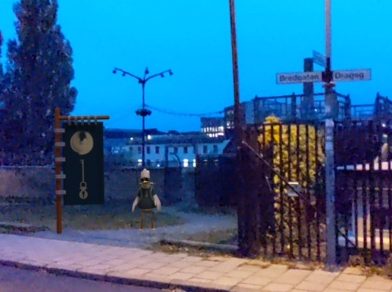
The next day was a full slate of light torture. First was preparing the AutoSalt at the majestic SMHI HQ. I met Jenny, Åsa, Gustav, Buban, Emil, Caroline, and Christer. We assembled the AutoSalt system and then headed to site to install. All went well and we left it running over the next few days. We got back into town at a reasonable hour and I had a chance to check to out what Norrköping had to offer. I even found this friendly guy hanging out on a street corner, asking for change. I assume he wanted money.
On Wednesday, my diabolical hosts had conceived a mélange of tortures so inspired, so transcendent, so, so artistic, I could not resist but admire them, even as the object of them. I would give a workshop on Salt Dilution, live-streamed, on-the-fly! Mikael rubbed his palms together and chuckled as he watched me at the podium, searching on my laptop, screen-shared, for something to present. Matilda wore a confident smile and tapped her fingernails loudly on the table. Daniel leaned back in his black leather chair from the head of the table and petted a pet iguana. Masterful! Somehow I (we actually) strutted and fretted through 6 hours of sound and fury, in the end, publishing it as a webcast.
Another day of light torture in the field (including hot soup and coffee with homemade sourdough sandwiches) and then again in front of a camera until I talked. This time, I didn’t have much to say, mumbling things like “then copy down, oh wait, that’s not right, hm. Hang on,” while Mikael “Felt sorry for (me).” The forgotten refractometer turned out to be a blessing in disguise. I had been misreading the unit all along. I had assumed (looking at John Fraser a bit here; I’m confident he won’t read this far) that it was measuring %Salinity by Volume, ie. if it reads 20%NaCl, then 1 litre of brine contained 200g of NaCl. This does not appear to be the case. All subsequent tests suggest that it is by mass, and quite accurately by mass. So 1 kg of brine reading 20%, will contain 200g of NaCl and 800g of H2O. This is different than what we had been calculating. Mind you, we always, always do a dry salt (weighed) injection at every AutoSalt installation and compare it to a pumped injection, with comparable results. We intend to check these comparative measurements to see if there was a systematic bias we had missed. To convert from %Volume (assumed) to %Mass (correct), one need to multiply by the density of the brine, which appears to be around 1.10 kg/l for 20%brine. Again, we were expecting 1.16kg/l for 20%, so this needs to be confirmed, and understood. I’ll update this post when it is. What does this mean for you? Well, if you run or built a power project using AutoSalt measurements to define your hydrograph, you just made 10%more profit, you’re welcome!
I can’t think of any negative repercussions of this misinterpretation. Grade 8 Science is challenging stuff.
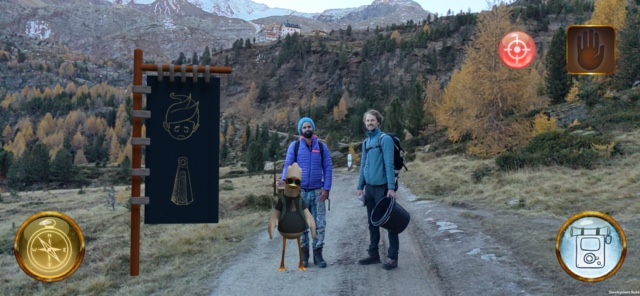
The Hills of Muenchenland
It was time to see my friends Michael, Florentin, and Bastian in Muenchenland. You may recall that when we left them, the Elemental Water had just spared you from eminent annihilation at Nei-chure’s talons, before she flew away vowing revenge on your species. She appears to have a fairly agressive schedule looking at the news in BC, Canada: heat-domes, wildfires, flooding, and landslides [4]. Despite surging CoVid19 numbers in Germany, the Muenchen gang seemed happy to be allowed out and about with their vaccine passports. We sapiens get a lot of bad press, but our optimism in trying times, and our ability to stand in queues, may be our saving grace. Time will tell.
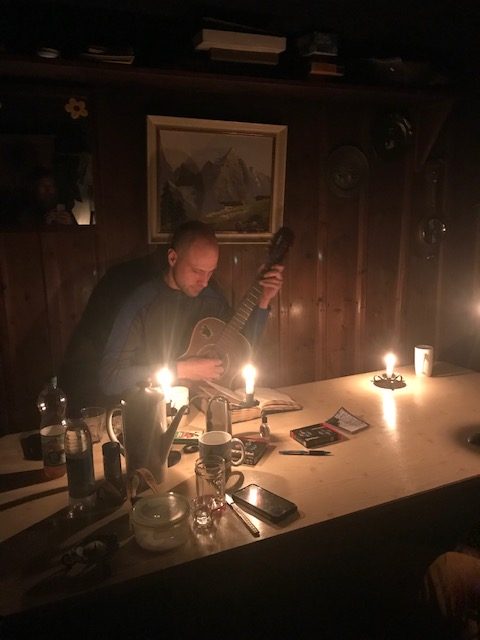
After a perplexing night of Brazilian Cinema in the cavernous Einstein Cultural Centre, spoken in Portuguese with German subtitles, we were off to the hills of South Tirol to winterize 3 AutoSalt systems. While they did manage to capture measurements for three large storms over the fall, one component of the system “needs some attention,” namely the flow meter. If you have a mechanical flow meter on your AutoSalt system, we now have a fix for water intrusion, until we have our IP67 magmeter implemented next year. Contact me to find out more.
The visit to Muenchenland was rounded out with a nice little hike up to Waxensteinhutte, where Basti was re-aquainted with his love of the guitar, and we were all treated with a shot of apple infused Benzene.

Stones and Mushrooms in the Tulgy Woods of the Scottish Highlands
Next on the Fathom world tour was the UK. At the invitation of Jeremy Spurway, I was tasked with training the four SEPA QiQuacs to behave in the rural little town of Aviemore. The QiQuacs, if you recall, were the first batch of Highlanders, named after the very place I now stood, and employing a state-of-the-art Up/Stream conductivity sensor to monitor background EC.T during the measurement. You can read all about it in this curated (heavily censored) description here or here. However, the caveat we quickly realized, is the distance the radio will transmit. Editions that SMHI scored, and NVE upgraded to, include a T-Ekho radio repeater. This little birdie will double your transmission distance, by adding a second point of contact to go around corners and over hills, as shown below.
As we hiked through the stony woods of the highlands, Jeremy would stop and nibble on mushrooms and berries. Previously an oceanographer, Jeremy can absorb knowledge and expertise, like air, by “reading books,” something that nowadays seems very old fashioned, like a butter churn or telegram. Similar to Mikael in Sweden, who makes his own charcoal briquettes, his own sourdough starter, and with his wife Lisa, their own paint! There is a renaissance of craftsmanship in this part of the world, where things taking longer and more effort imbue their work product with meaning. Perhaps this is a luxury of the 1st world, but perhaps it is also an evolution of value. I’m reminded of the late-great Stuart McLean’s motto for the Vinyl Cafe
“We may not be big but we’re small!” Stuart McLean
Fathom approves and adheres this value system [5]

Somehow, I did not have a T-Ekho with me in Aviemore. No refractometer, no T-Ekho, no excuses. So we were limited by line of site and CE radio power constraints, which translated to about 400m. Here Jeremy can be seen, happy as a clam, to have defeated gravity once again, using “duck” tape and a little sapling tree. The measurements worked out “OK” with Grade A’s and Grade B’s, despite what appeared to be excellent mixing, the 4 probes on the left bank consistently had higher Q values. The DQ decreased with increased mixing length however. The takeaway being “Always go further than you think you should.” The QiQuacs will always pick up the NaCl signal, but there’s no accounting for incomplete mixing. I will point out again, that if you have your probes centered roughly in 1/nth of the flow (either 1/2 for 2 probes or 1/3 for 3) then QComp will give you an excellent estimate of the true Q, as documented in vEGU_3rd_US_DS_Complete_V0.2.
We had an excellent dinner that evening at the Old Bridge Inn, something straight out of Fathomland, where Jeremy, Graham, and I discussed, and SOLVED, most of the world’s problems. Unfortunately, the world leaders didn’t ring us to find out the solution. I did have a Cullen Skink, however, which was very tasty and fresh despite its name. After a few pints, and then a few more, Jeremy and I were able to recount The Jabberwocky in its entirety, from memory, and we walked home happy with our accomplishments.
The next day was at Feshie Bridge, which Jeremy assured me was “Awesome.” Apparently you can jump off this bridge into the pools below. It was a bit too cold for that on this day, otherwise I totally would have done that.
We injected about 400m upstream and the first few measurements. We got a surprising range of Q’s, shown in Figure 31, with a QComp of 10.3 cms+/-6.3%. A concurrent ADCP measurement was 9.85cms after Ian processed in QRev. However, I note that the first Q from WinRiver was 10.3cms. But Ian adjusted the assumptions around the extrapolation zones in the bottom and top and sides of the measurement. I was a bit skeptical if there was 4.5% difference between WinRiver and QRev, at least the third decimal place. I’m going to say the ADCP gave 9.85+/-5% (and that’s assuming 5% is the 95%confidence interval, a generous assumption.)

I also noted that the established rating curve was reading 9.3cms at that time (12:00). I’ve measured downstream of hydropower intakes many times and there is usually a decrease in flow downstream of the intake as water forced to the surface at the intake again moves into the hyporheic zone. This could also explain the lower flow downstream.
With regards to the U/S probe measurement, at this site, we again placed the CH2 probes within radio contact, which was about 400m U/S and in line of sight. Measurements indicated mostly complete mixing, at least Grade A results could be obtained, but the sharpness and the noise in the resulting traces indicate more mixing reach was needed. The U/S probe is shown against one measurement in Figure 32. At this scale it looks good and rises slightly with the BGECT from the D/S measurement, however when you zoom in, shown in Figure 33, you can see a small amount discrepancy between the U/S and D/S signal over time. While this amount is small, only 0.03uS/cm over 20mins, it is a difference between 10.8cms and 10.4cms. In this case, we have elected to only use the CH2 signal as contextual information for this measurement. The water level was falling over time, so this small increase in conductivity results from the decreasing percent of rainfall runoff.

[rev_slider alias=”feshie”]
We asked Jeremy to go further upstream and inject again, and then we waited a long time for him to return. Turns out he found a patch of XXX mushrooms, which he exclaimed “This makes the whole workshop worthwhile!” I started to tear up a bit, and he corrected himself, “Doubly worthwhile!” and patted me on the shoulder. I calmed down. I realized Jeremy’s life is full of distractions and wonder, constantly leading him down forest paths, hydrology, oceanography, tulgy woods and finally into salt dilution workshops. He’s an inspiring figure in his Welly’s, shorts, and speeding around Scottish woods in his bright orange adventure van.
So, the take away from the 1st Annual Scottish Highland Tracer Workshop and Pub Crawl is:
- SEPA needs radio repeaters for the U/S probe OR a built in datalogger so that they are not hampered by radio range,
- The U/S signal is not always the best for BG ECT, but does always provide a context to make decisions
- Downstream of bedrock constrictions often result in higher flows at the constriction compared with downstream
- Always go further upstream than you think to achieve a good mix
- Always look for magical mushrooms and berries in the forest.
New Creatures in the Fathomland Menagerie
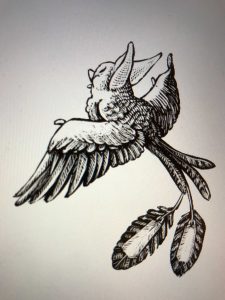
Fathomland Mecha-Biologists have been sailing in the Spurway Archipelagos in search of new creatures. Named for the intrepid onboard Naturalist, Dr. Spurway, and accompanied by our own Fathomland Flora and Fauna Illustrator, Fenella, we are proud to announce the discovery of two new entries into the Encyclopedia Fathomlandia:
T-Ekho: Like the ancient Greek naiad Ekho who spied on Narcissus as he gazed at himself staring at a pool, T-Ekho is destined to repeat whatever she hears. T-Ekho is a radio repeater for use with the QiQuac Highlander kit when hills, trees, bushes, and rocks get in between your QiQuac and its T-HRECS. Hang this little beauty in a tree and let her sing her song!
Helios: Fresh from the burning furnace of Sol** comes Helios! This new edition to the T-HRECS family boasts a shiny black solar panel on it’s torso, an internal LiIon battery, with backup D-Cell batteries so that it can sit/sleep/measure/report until “The Ends of Time”
Fee-Oh! Wait.. QiQuac Mobile! No, wait, hangon, QiQuac Free Range Edition!
I’m having a hard time naming the Mobile version of the QiQuac interface. But it’s ready for beta testing. It requires an update of your radio firmware to work, but will work with existing QiQuacs. The mobile app gives you all the colours and resolution of your phone, paired to the QiQuac via Bluetooth (short range). The QiQuac, however, has longer range radios to speak to the T-HRECS far and wide. So we think this is an ideal solution. The problem is… 1. The QiQuac is already so fun and handy to use, especially in the rain, and 2. I am constantly walking away with my phone and missing some of the measurements.
But if you are disciplined and can leave your phone beside the QiQuac, this app gives you the ability to post-process the measurement (just like in the Salt Portal) AND sync with the Salt Portal when you’re back in wifi. THAT’s pretty cool. If you want to be a beta tester, let me know.
AND FINALLY… ANNOUNCING… WITH GREAT POMP AND CIRCUMSTANCE.. THE LORD OF LORDS (King Nick heard mumbling “but I’m right here?”) THE TITAN OF TIME…
KRONOS TIME SERIES
Are you allergic to Excel? Do you clam up thinking about setting the y and x axis? Paralyzed by trying to get several disparate time-series into the same time-base so you can generate comparative plots? Then you’re like me, and should fall down on your knees before KRONOS! LORD OF TIME SERIES!


Kronos is our beta release of the long-anticipated WIT-HM expansion of the Salt Portal. Not only can you manage compound, hydraulically based rating curves, but now you can manage them through time AND instantly apply them to a stage record to generate temporally varying RC-derived hydrographs! Wha!?! Not only that, but compare ANY time series against another, or against time. All in a super-slick and fast web-based interface.
Now please, please, your attention, please calm down. Kronos is in it’s very infancy, only in Beta release currently. This means that if you choose to work with us on it, you may lose some of your work, although we will attempt to keep it. Still, it’s very easy and straightforward to regenerate the time series database. We want this to eventually replace excel as the place to generate rating curves and hydrographs. Now, I know, many of you use Aquarius Time Series and WISKI, but that doesn’t exclude you from using Kronos. We already can export our Rating Curves to a format that Aquarius can import. The same goes for individual Salt Dilution IQs and Salt Dilution Group IQs to both WISKI and Aquarius. The intent of Kronos is two fold:
- Help us withdraw from excel burnout
- Provide customers of AutoSalt and QiQuac an inexpensive and powerful way to manage their hydrometric data.
What’s that, inexpensive you say? Yes, we too are consultants have thrown up in our mouths a little bit by the price of these enterprise level solutions. “Surely there is a middle ground!” I hear you shout. Indeed, we intend to keep the Subscription price of Kronos under $3000/year, perhaps as low as $1000/year for a basic version. But the subscription, they tell me, is the path to long-term support and a continuously improving system that is sustainable for both Fathom and our customers.
If this is something that interests you, please contact us for more information. If we can get the support I believe the system merits, we intend to build it out to the fully features hydrological modeling and data management tool dreamed about in this posting. The current beta release is an important first step in this journey.
Summary
It’s been a long year that really has sped by. I’m ignoring so many tasks by writing this blog right now, but it’s important to stay in touch. I greatly appreciate the patience and faith our customers (you! pat yourself on the back) have had with our products. I believe we are now seeing the fruits of our labours, or rather… mushrooms in the tulgy woods because we just happened to be there at the right time and our eyes were open.
Cheers!
Gabe
P.S. Maybe you noticed, there are some strange images in this post, multi-layered clocks, futuristic panhandling ducks, how about this one.. You’ll just have to wait for the next Resonance post to find out more..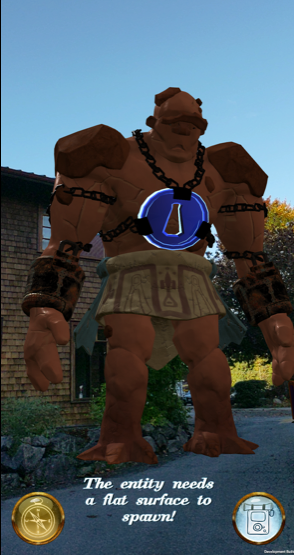
[1] True nerds will recognize this reference to one of the first Role Playing Adventure games from Epyx that was entirely made up from the extended ASCII character set. I can never look at an Ampersand the same way.
[2] Who has ever heard of a proprietary hydrology model? This doesn’t make sense for public resources, it’s just not in the spirit of science. Or at least departs from the ethos of science that I subscribe to.
[3] I have no idea if anyone saw this poster. This was the first conference I never went to due to the pandemic. I wonder if a single person saw the poster I slaved away on for days.
[4] On that note, I did calculate and purchase audited carbon offsets for the trip. I know it’s not the best policy (not travelling may be best, or travelling by bike, but not by methane producing horses) but I don’t see technology going backwards. I’d prefer to support green energy projects and trees, than not travel.
[5] At least until we’re bought out by Xylem, then we’ll change our tune, something like “with today’s acquisition, we will achieve synergies of scale not possible as a small batch instrumentation brewhouse.. etc. nb. I dislike my future uber-wealthy self, for the record.


